- Learning time
- 30 minutes
- First play time
- 90 minutes
Tesseract
Designed by: James Firnhaber
There it hangs, looming above Earth like a celestial pressing work deadline. Except this time, the entire of humanity is at stake – can you save us?
Tesseract is a co-op game where the players work together to prevent this faceless thing in the sky from destroying the world as we know it. The tesseract itself is constructed from 64 dice assembled on the game’s own miniature lazy susan. Each player is a researcher struggling to save the day: removing dice from the tesseract itself, bringing to their lab and then containing them. Each number of each coloured dice must be contained before time runs out, which can happen in a couple of different ways.
On your turn you take a mix of three actions: remove is taking a die from the tesseract and putting it into your personal player board, otherwise known as your lab. If you have a set of dice – a set being three or more of a kind, or three or more in a run, in both instances all the same colour or all different colours – you can contain one of them: simply place it in the containment board on it s matching spot. Players can adjust dice values by one pip to help create these sets, and move cubes from one person’s lab to another by transferring. Finally everyone starts with a basic research card that gives them a helpful one-off power during the game, and you can study: returning a research card and getting a better one.
After your three actions are complete – plus any research cards played, and/or special abilities in your unique researcher role – the tesseract itself will act before the next player’s turn: this is called the threat phase and involves removing the lowest available die (ie at least three sides showing) from the tesseract and placing it in the prime area. This is the space invader equivalent of firing at you: one or two matching primed numbers do no harm, but if any number gets a third die it causes a Breach: seven such breaches in the game mean you all lose! And not only that, whenever a die from the bottom layer of the tesseract is removed, it triggers a punishing event: which can mean more dice being removed, which can lead to a chain reaction of Bad Stuff Happening.
However you do have assistance yourself: the aforementioned research cards, and your own unique player ability. Don’t underestimate transferring dice to each other; this can be very helpful at the right time. And if you find the introductory game (with relatively manageable events printed on the base of the tesseract) too easy, try the other bases in the box, which range from A little bit tougher to Who made the tesseract angry.
The guru's verdict
-
Take That!
Take That!
None - players are working together.
-
Fidget Factor!
Fidget Factor!
It depends on how many players you have and at what rate they like to consider their options. But you'll be talking to each other on every turn and invested in what happens.
-
Brain Burn!
Brain Burn!
It's a question of reacting to an ever-changing situation, with new dice being revealed at the end of every turn and players collectively using what tools they have to prevent disaster.
-
Again Again!
Again Again!



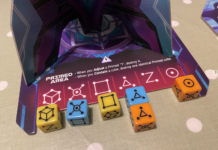
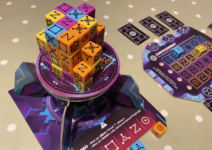
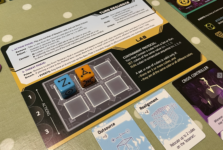
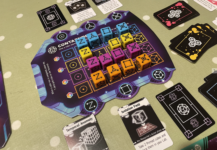
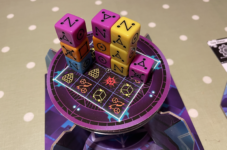
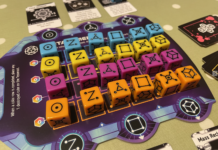


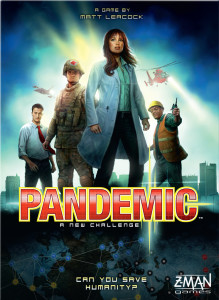
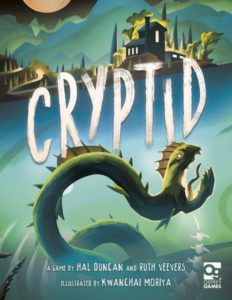
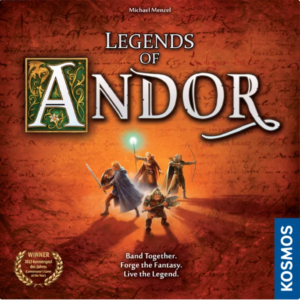

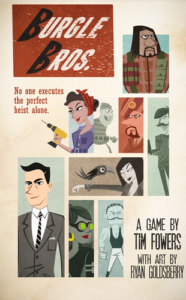
Sam says
Whilst every co-operative game asks players to work together, this can manifest in different ways: some, like The Crew, restrict communication, while others like Pandemic actively encourage it. The is a potential with the latter that the smartest or quickest players - using those adjectives loosely - end up playing for everyone, as they spot what is necessary soonest and - as the situation suggests - speak up about it. Fun for them, but not for the players whose turn it actually was to make a decision. Tesseract has that open-communication set-up, so does rely on players to police themselves and give everyone room to peruse/ponder/breathe and not 'quarterback' the game into their own solo undertaking. But I don't mean to criticise Tesseract itself, which is an engaging puzzle, easy to teach once you know the rules and despite the mathy feel to it, hangs on to its theme enough to keep the narrative alive and the tension palpable. I confess to crying out The Tesseract is degrading! more than once as our control on the situation began to unravel. It looks great, too.